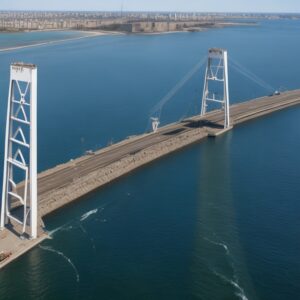 During an overnight operation, Ukraine deployed a significant number of drones against Russian-held Crimea, according to statements from Russia’s Defense Ministry. The exchange is part of ongoing intensified drone activities by both Moscow and Kyiv, targeting critical infrastructure during the winter months.
During an overnight operation, Ukraine deployed a significant number of drones against Russian-held Crimea, according to statements from Russia’s Defense Ministry. The exchange is part of ongoing intensified drone activities by both Moscow and Kyiv, targeting critical infrastructure during the winter months.
On Tuesday, the ministry reported that Russian air defenses had intercepted 41 of Ukraine’s drones above Crimea, which is under Moscow’s control, and the adjacent Sea of Azov. Locations of these downings were not detailed in the reports.
This attack marks one of the most substantial Ukrainian drone assaults on territories held by Russia in recent times, continuing Ukraine’s pattern of using UAVs for strikes on the peninsula and areas near Russia’s border. Previously, the Russian government mentioned that on August 25, Ukraine had employed 42 drones in a series of overnight incursions. While these drone strikes by Ukraine on Russian territories, including border zones and Crimea, are a regular occurrence, they typically do not involve such large numbers of drones.
Ukrainian officials often refrain from officially acknowledging such drone strikes. Following inquiries, Ukraine’s military did not provide a statement to Newsweek.
After a sequence of reported blasts in the vicinity of Kerch in Crimea, authorities temporarily shut down the Kerch Bridge, also known as the Crimean Bridge, early Tuesday. This pivotal bridge, connecting Crimea to mainland Russia, has previously been a target for Ukraine, including attacks with naval drones.
Reports in Russian on Telegram and local Crimean media indicated that two Ukrainian drones descended close to an oil storage facility in Feodosia, located in eastern Crimea. Astra’s coverage included that one of the drones detonated approximately 330 feet away from an oil storage tank at the site.
The Russian Defense Ministry has been approached by Newsweek for comments via email.
In a contrasting report on Tuesday, Ukraine’s armed forces stated that Russia launched assault drones designed in Iran, known as Shahed kamikaze UAVs, targeting Ukraine from two locations throughout the night. The Ukrainian air force reported intercepting 10 out of 17 strike drones released by Moscow from the Kursk region, near northeastern Ukraine, and from Primorsko-Akhtarsk in the Krasnodar region by the Sea of Azov.
According to Ukraine, Russia deployed six S-300 missiles above the Donetsk and southern Kherson regions in Ukraine.
In late November, Ukrainian military sources noted Russia’s unprecedented barrage of Shahed drones launched against Ukraine, numbering 75 from two locations within Russia. These UAVs reportedly reached at least six Ukrainian regions, including the capital, Kyiv.
As anticipated by Ukrainian officials and global analysts, with tougher weather conditions approaching, it was expected that the Kremlin would replicate its harsh missile and drone strike campaign from the previous winter. Early in October, a Ukrainian Air Force official predicted possible larger-scale drone assaults than those in the previous year and mentioned that September 2023 alone saw 500 Shahed drones deployed by Russia.
The President of Ukraine, Volodymyr Zelensky, warned in mid-November that the country should be ready for potential escalations in drone or missile attacks on Ukrainian infrastructure by enemy forces.